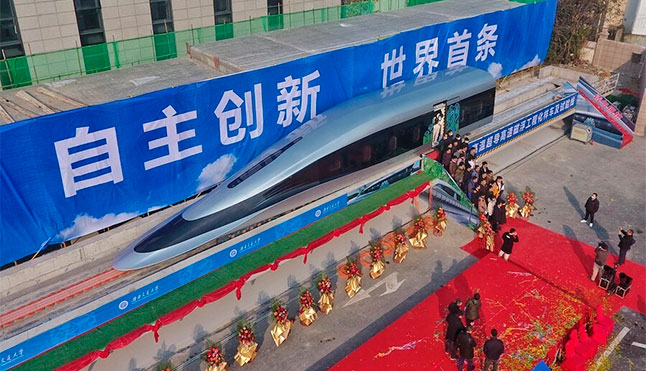
Maglev trains are currently one of the fastest ground transportation methods we have. At hundreds of kilometers per hour, these trains are capable of transporting hundreds of people over long distances and much shorter periods of time than traditional trains by levitating over the tracks. Now China seeks to go further, with a new technology its next maglev train expects to reach a minimum of 620 km / h.
The new train was recently unveiled in Chengdu, the capital of Sichuan province in southwest China. In reality it was a prototype of the train that was presented. With a futuristic and streamlined design, the full-scale maglev train has been levitated in front of everyone to demonstrate its capabilities.
They say it will reach a minimum of 620 km / h, and previously they have shown us another one that goes for 600 km / h. In Japan the Maglev L0 Series reaches 603 km / h.
Magnetic levitation with high temperatura superconductor
There is an essential difference between this maglev and others that already operate throughout the world. It is this difference that allows it to reach speeds much higher than a traditional maglev train (which is usually around 400 km / h). This difference is none other than the type of levitation technology it uses.
The new Chinese maglev train uses a high-temperature superconductor developed by Southwest Jiaotong University, China Railway Group Limited, and CRRC Corporation Limited. Around 9 million euros have been invested to carry it out and HTS (High Temperature Superconductor) technology is expected to be more efficient for maglev trains.
Traditional maglev trains use a low-temperature superconductor. In such a case the train has to accelerate first before levitation. With HTS, however, the train can be made to levitate directly, thus allowing it to be accelerated with less energy consumption. At the prototype presentation, attendees were able to move the 12-ton prototype with a single finger, according to CGTN.
All that said, there are still snags to be resolved before we see this maglev train hauling passengers. Engineers indicated that there were still problems to be solved before it was commercially viable. Among these problems, the construction of the maglev lines for this train stands out, which is estimated to cost several tens of millions of euros for each kilometer of travel. There is also the problem of noise generated by a train of this size and with such high speeds.
xataka.com
